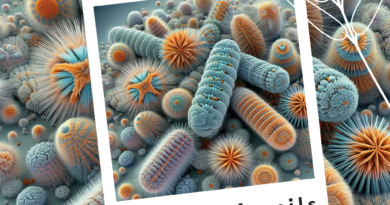Jupiter’s Moon Will Be Orbited First-Ias Banenge
Context
At the European spaceport in Kourou, French Guiana, the Jupiter Icy Moons Explorer (JUICE) spacecraft was recently launched by the Ariane 5 rocket.
Relevance:
GS Paper-3: Science and Technology- Developments and their Applications and Effects in Everyday Life; Awareness in the fields of Space
READ MORE – Digitising Registration in India’s Land Records- Ias Banenge
Mains Question
What are your knowledge of the JUICE mission from the ESA? What role will it play in scientific research? (250 Words)
Highlights:
- NASA is developing the Europa Clipper, an interplanetary mission that includes an orbiter.
- The spacecraft is being developed to study the Galilean moon Europa through a series of flybys while in orbit around Jupiter and is scheduled for launch in October 2024.
- JUNO is a NASA spacecraft that orbits Jupiter.
- It was launched in 2011 and, in order to start a scientific investigation of the planet, it entered a polar orbit around Jupiter in 2016.
JUICE Mission of the European Space Agency:
- The JUICE probe will approach three of Jupiter’s four large moons before circling Ganymede and looking for signs of an ocean beneath its icy surface.
- If all goes well, the probe will circle back and pass close to both Earth and the Moon in about a year, which will help to slingshot the spacecraft towards the outer Solar System. o If successful, it will be the first time that any spacecraft has orbited a natural satellite other than Earth’s Moon.
- “The most accurate gravity-assist manoeuvre” ever performed will be needed for this double fly-by.
- JUICE will follow the following trajectory:
- After a fly-by of Venus in 2025, during which it will be subjected to intense heat, it will then make two additional passes of Earth in 2026 and 2029.
- When it reaches Jupiter in 2031, its main engine will run a protracted retro-burn to slow down and start orbiting the planet.
- Callisto, Jupiter’s second-largest moon, will be passed by JUICE 21 times, but Europa, the smallest Galilean moon, will only be seen twice.
- That’s because a NASA mission called Europa Clipper, scheduled to launch in late 2024, will closely examine Europa.
- JUICE will restart its main engine in 2035 to enter orbit around Ganymede for a minimum of nine months.
- This will be a skillful manoeuvre.
- JUICE weighs almost 6 tonnes when loaded with 3.5 tonnes of propellant. JUICE will also deploy an abundance of booms and antennas for its ten onboard instruments, which were built by teams in France, Germany, Italy, the Netherlands, Sweden, and the United States, as well as the minimal amount of solar panels needed to operate around Jupiter, where solar energy is only 4% as powerful as on Earth.
- Hidden oceans: o Some of Jupiter’s icy moons are believed to contain liquid water beneath their primarily water-ice surfaces, possibly providing a space for the emergence of life.
Jupiter
- Jupiter, the largest planet in the Solar System and the fifth planet from the Sun, is a gas giant whose mass is more than 2.5 times greater than the sum of the masses of all the other planets.
- Jupiter is primarily composed of hydrogen (90% by volume), followed by helium, which makes up a quarter of its mass and a tenth of its volume. Jupiter is the third brightest natural object in the Earth’s night sky after the Moon and Venus.
- Jupiter has about 95 known moons and probably many more, including the four large moons discovered by Galileo Galilei in 1610, such as Io (Jupiter I), Europa, Ganymede, and Callisto. Jupiter is encircled by a faint planetary ring system and has a strong magnetosphere.
- Ganymede is the largest moon in the Solar System and the only one that is currently known to have its own magnetic field. It is larger than the planet Mercury.
Way Forward:
- Topographical maps created by JUICE’s laser altimeter will be one of the most definitive tests of the ocean theory.
- Due to the gravitational pull of the other moons as well as Ganymede’s weekly orbit, which causes it to move slightly closer and farther away from Jupiter, tidal forces cause it to stretch and compress.
- Such deformations could cause the surface of a water world with an ice crust to sway upward and downward by up to 10 metres.
- These instruments will map the icy moons’ surfaces as well as investigate the chemistry of their tenuous atmospheres, Jupiter’s potent magnetic field, its radiation belts, and other topics.
Conclusion:
- Juno will have completed its mission and run out of propellant by the time JUICE and Europa Clipper arrive.
- However, scientists are enthusiastic about the idea of having two probes in the system at once, as this could allow for simultaneous measurements of Jupiter’s magnetic field at two different locations.The planned conclusion of both missions is a safe crash landing on Ganymede’s surface.




